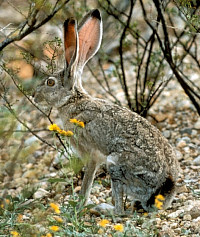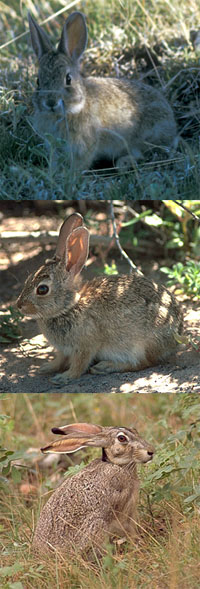Rabbits
These animals may have been second only to deer in their importance to prehistoric life in the region. Rabbit bones are commonly found at sites throughout the region where animal bones are preserved. At least three different species were food resources: the eastern cottontail (Sylvilagus floridanus), black-tailed jackrabbit (Lepus californicus) and, to the west, desert cottontail (S. audubonii). The ranges of the two species of cottontail overlap and, as its common name implies, the desert cottontail is adapted to drier, warmer conditions whereas the eastern cottontail favors somewhat wetter conditions such as those found in the eastern Edwards Plateau. Shifts in the predominance of one cottontail species over the other in the deposits in Halls Cave in Kerr County, are thought to reflect climatic shifts between wetter and drier conditions.
Rabbits were a valuable meat source, but their fur was also an important resource. Rabbit-fur robes are known from the dry caves of the Lower Pecos Canyonlands and they were probably used throughout the region as winter garments. Rabbit bones were cut into short lengths to make beads.
![]()

